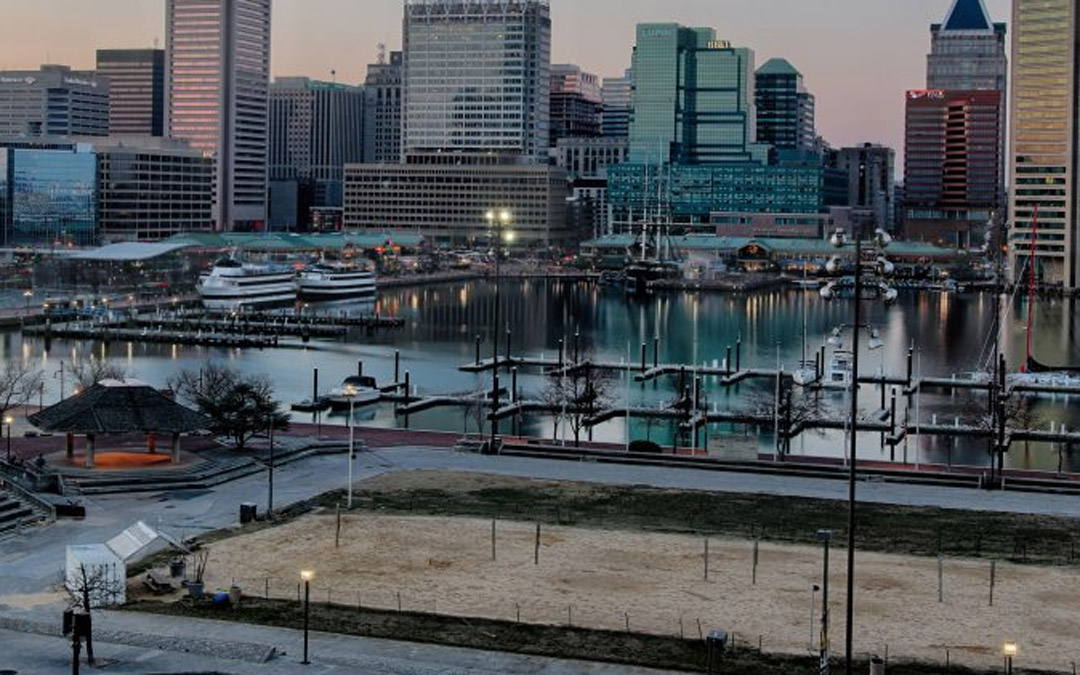On Oct. 6, 1991, as the Baltimore Orioles and Detroit Tigers played the final Major League Baseball game ever at Memorial Stadium, I sat in the upper deck with a young social worker named Suzy Ricklen, who looked around the old ballpark and tried to put a hold on time.
“There are enough things that change in the world,” she said wistfully. “People come in and out of your life, but you figure buildings will stay.”
On that sentimental day, Memorial Stadium seemed to have been with us forever. But this was time playing tricks on us. The modern Memorial Stadium, as most of us knew it, was only 38 years old.
And now, I notice by the calendar, and the sense of obsolescence in the air, that Harborplace has just turned 40. At such a moment, it’s useful to remember that even buildings sometimes go away.
With about as much fanfare as local old-timers had ever seen, Harborplace opened on July 2, 1980. Mayor William Donald Schaefer sailed in on a wooden replica of a 19th-century clipper ship, joined by the great developer Jim Rouse and M.J. “Jay” Brodie, commissioner of the city’s Department of Housing and Community Development.
Harborplace was instantly the new hope of the city. For some years, we were told, it drew more tourists than Disney World. It made a lot of people feel a new kind of pride about the old hometown, including millions of visitors and the several thousands who went there to make a living in post-industrial Bawlamer.
Now, as Brodie concedes, the place feels as if it’s outlived its promise and needs a dramatic physical makeover.
“Rip out the shell,” he said in a recent conversation, “and start over.”
But that’s only part of the problem for a place once regarded with pride and now regarded as an afterthought or an embarrassment.
In a piece that ran last winter in the Baltimore Business Journal, Brodie wrote, “What changed? Competition gradually arrived in upscale Harbor East shops and restaurants. Then came online shopping. Downtown parking became expensive.”
And then the ownership changed, and changed again, to Ashkenazy Acquisition Corp., which has been disastrous. Harborplace is now in receivership.
Let’s add a few other problems to Brodie’s list. When Harborplace opened, many of its shops had Baltimore themes. Each one felt like a surrogate for the whole town puffing out its chest.
But those places were forced out when rents were raised far too high. Minus the local flavor, the two pavilions became a generic shopping mall by a harbor. Out-of-town tourists didn’t have to drive to Baltimore just to see a bunch of chain stores they could visit at home.
And then in recent years, Harborplace has been victimized by the same taint as much of “downtown” Baltimore, a concern that it’s not as safe as it used to be.
Does that mean its best days are behind it? Brodie says no.
“When it opened in 1980,” he said recently, “nobody was moving downtown. But we’ve now got about 40,000 people living within a mile of the harbor.” These are mostly young professionals and empty-nesters, and they have money to spend.
Also, the nearby National Aquarium, Maryland Science Center and Rash Field have all been reinvigorated.
But Brodie’s focus on the future means gutting the 40-year-old Harborplace pavilions and going beyond traditional shops and eateries.
Among his ideas: an interior music space, with regularly scheduled day and evening performances by the Baltimore Symphony Orchestra and by local colleges and high schools. Also, exhibition spaces with works from local museums and artists.
“The idea is to generate enthusiasm for people who haven’t been to Harborplace for a while,” said Brodie, “and to bring back the original sense of Baltimore authenticity.”
Buildings, like fashions, can run their course. Memorial Stadium went, and Oriole Park arrived. The Inner Harbor isn’t going anywhere. Brodie calls it the best piece of property in town.
But maybe inside its old skin, a new Harborplace can be born, full of the kind of pride it once brought us, and someday might bring us again.

A former Baltimore Sun columnist and WJZ-TV commentator, Michael Olesker is the author of six books. His most recent, “Front Stoops in the Fifties: Baltimore Legends Come of Age,” was reissued in paperback by the Johns Hopkins University Press.





